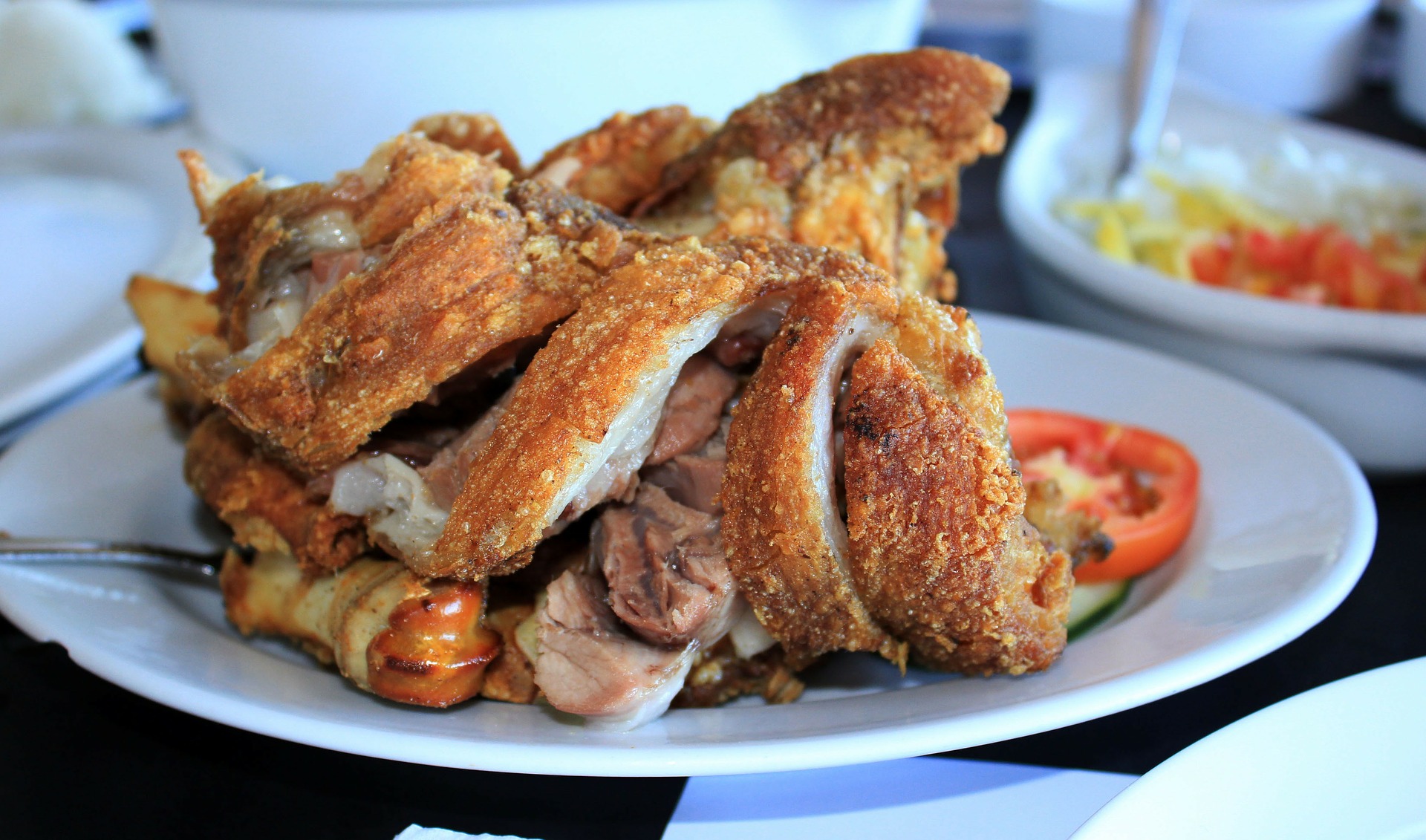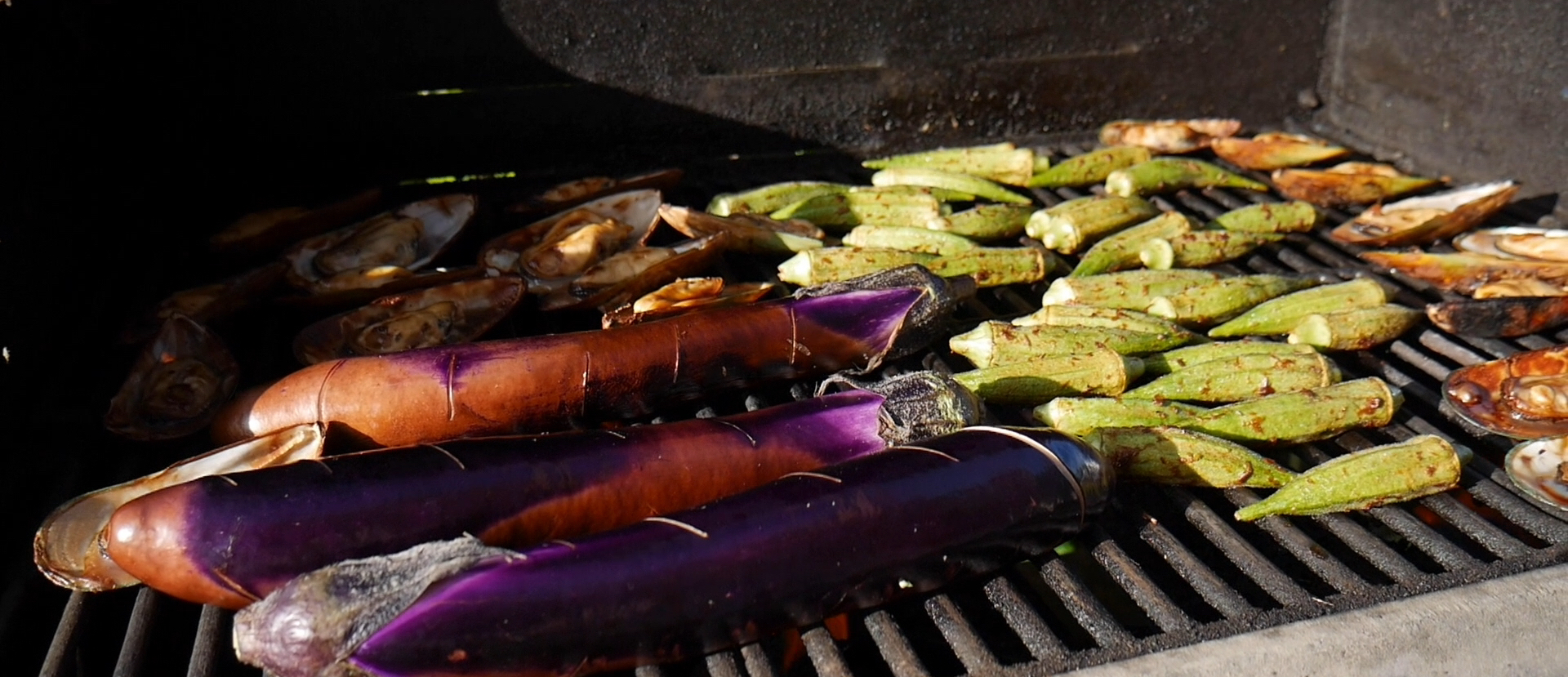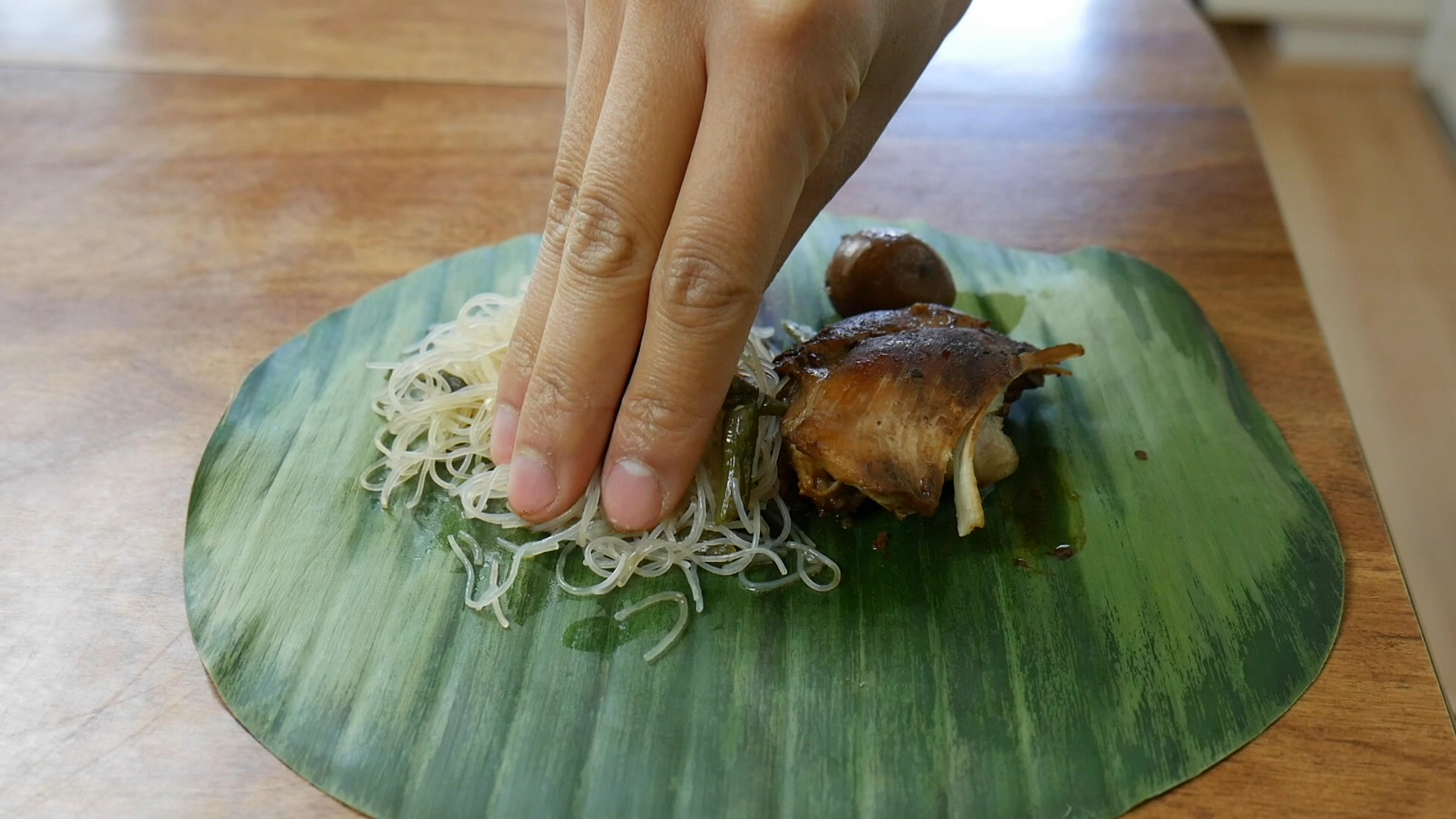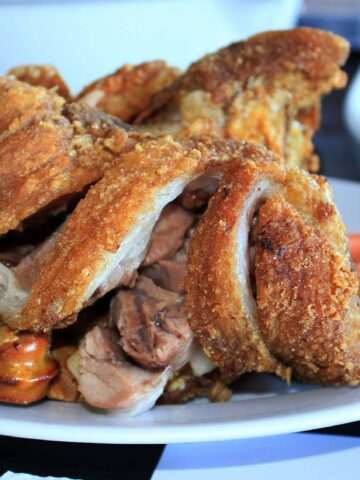A “kamayan feast” is a Filipino tradition where food is laid out atop banana leaves, and eaten with your hands. “Kamayan” means “with hands” in Tagalog, and these feasts have been all the rage in social media these days.
Kamayan feasts are also referred to as “boodle fights”, and they were created in the Philippines as a way to feed hungry soldiers. Nowadays, they’ve turned into an awesome way to gather your friends together for an unforgettable dinner experience.
The most highlighted restaurant that serves kamayan is Jeepney in New York, a Filipino gastropub. They specialize in creating impressive spreads that range from $45-$75 per person.
After being inspired by multiple videos highlighting boodle fights from all over the world, I decided to host one myself. I felt obligated too, as the token Filipino friend in my group.
We had six adults and three children participating in the feast, with a budget of $10 per adult. We had one cook, and three hours to complete a boodle fight.
As the solo cook, I’ll share some tips from our kamayan feast experience. Hopefully these tips will encourage you to host your own boodle fight at home!
Preparing The Menu

Crispy Pata’s crunchy exterior holds juicy, tender meat on the inside.
I wanted a “star” dish on the middle of the table, which would ideally be a full roasted pig. We only had six adults partaking in the feast, so we decided to have crispy pata (deep-fried pig trotters) as our feature dish instead.
After bouncing around ideas with my boyfriend, this was our finalized menu:
- Pancit bihon: Filipino stir-fried vermicelli noodles
- Chicken adobo with quail eggs: chicken marinated in soy sauce, vinegar, garlic, bay leaves, and peppercorns
- Roasted eggplant
- Roasted okra marinated in shrimp paste and vinegar
- Bangus: milkfish, marinated in vinegar and other spices
- Tinapa: smoked milkfish
- Mussels marinated in black bean sauce, vinegar, and pepper
- Garlic Butter Shrimp
- Longganisa hamonado: sweet pork sausage, typically served for breakfast
- Chicken tocino: sweet chicken, typically served for breakfast
- Crispy pata: deep-fried pork trotters
- Garlic Fried Rice
- Salted eggs
- Tomatoes
- Cucumbers
- Bibingka: sweet Filipino coconut rice cake topped with salted egg, cheese, and cooked on banana leaves
Along with the main dishes, we also included a variety of dipping sauces and garnishments:
- Calamansi: small Filipino citrus fruit
- Sweet chili sauce
- Vinegar with chilis
- Vinegar with garlic
- Plain vinegar
- Shrimp paste
Cooking Schedule

Next, strategize what you need to marinade or cook at least a couple of days before your feast. Although cooking every dish from scratch is ideal, it’s a daunting project for only one cook.
The best strategy is to buy half the dishes pre-marinated or cooked, and make half of the dishes from scratch. This will greatly decrease your prep time and increase the quality of your home-cooked dishes.
The Filipino market provided pre-marinated bangus, tinapa, and longganisa that only required quick frying on the stove. It was wonderful not having to worry about marinating time!
Flavorful crispy pata, which was our star dish, requires both marinating and a deep fryer. It would have taken too much time to prepare, so we decided to buy it from a restaurant instead.
The rest of the dishes were quick to season and cook, making it ideal for one person to finish within a few hours. Turn your oven on the “warm” setting, and stick the cooked dishes inside until they’re ready for serving.
Keep in mind that you don’t need a menu as extensive as ours to enjoy a proper boodle fight!
Table Setup

For a true kamayan feast, buy banana leaves from your local Asian market. You’ll usually find them in the frozen section.
Thoroughly wash your banana leaves before laying them out on the table; all the precious food will be arranged on these leaves. Buy at least two packs to ensure you have enough banana leaves to cover your table.
When laying out the food, make sure people from different ends of the table have access to all the dishes without reaching over. You don’t have to worry about this if your table is small.
How To Eat With Your Hands

Finally, it’s time to eat! Using your dominant hand, create a claw motion with your hand.
With your fingers turned outwards, clump your food together between your five fingers to pick up your food! If you need visual instructions, watch the end of the YouTube video at the top of this post.
* * *
Boodle fights are traditionally Filipino, but feel free to incorporate dishes from other cultures. I can see sauerkraut next to bratwurst just as easily as I can see longganisa next to pancit.
Most importantly, have fun! Kamayan feasts are a unique way to bring people together, regardless of your culture or ethnicity.
If you were to create a boodle fight at home, which dishes would you choose? Let me know in the comments below.

